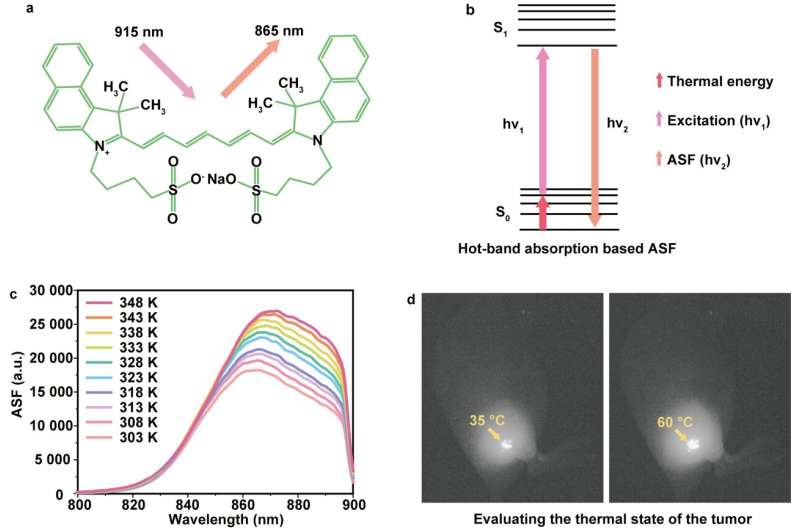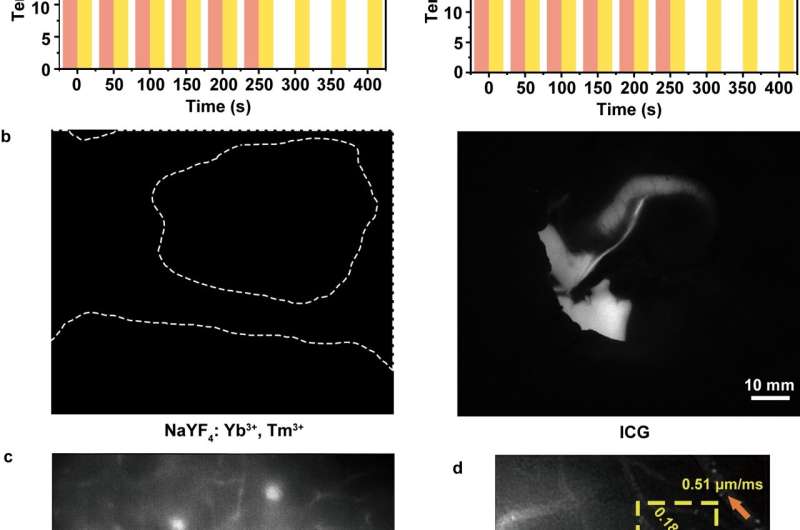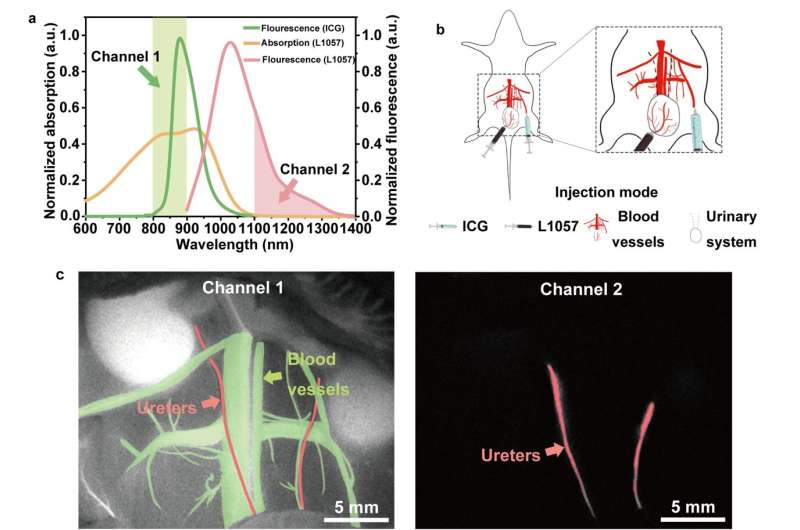Hot-band absorption of Indocyanine Green for advanced anti-Stokes fluorescence bioimaging

Hot-band absorption based anti-Stokes fluorescence (ASF) of Indocyanine Green (ICG), much brighter than luminescence from rare-earth ion doped nanoparticles, was observed and studied by scientists in China and U.S. recently. They found that the ASF of ICG can be used for tomography and blood flow velocity measurement of cerebral vessels, reflecting the change of temperature, and achieving multi-organ simultaneous imaging, and has considerable application prospects in biological imaging, sensing and even clinical translation.
There are four common types of anti-Stokes fluorescence (ASF): (i) direct multiphoton absorption (MPA) process, (ii) upconversion (UC) process based on multistep absorption through intermediate energy levels, (iii) thermally activated delayed fluorescence (TADF) process, and (iv) hot-band absorption (HBA) process. The occurrence of MPA fluorescence generally requires extremely high excitation intensity and is usually achieved by using expensive femto- or pico-second pulsed lasers. UC processes in rare-earth ion doped nanoparticles (UCNPs), or triplet-triplet annihilation (TTA) based UC, can be obtained by using inexpensive continuous wave (CW) diode lasers. However, the absorption cross section of UCNPs is relatively small, resulting in low UC efficiency. TTA based metal complexes/organic compounds systems have larger absorption and higher quantum efficiency to be more efficient upconverters than UCNPs. Unfortunately, photostability of TTA based upconverters is relatively low due to strong quenching processes caused by molecular oxygen. TADF and HBA process in organic molecules excited by the CW laser are attractive anti-Stokes processes. What's more, the potential of them to provide information about temperature in excited volume, makes them more attractive for application in bioimaging.
In a new paper published in Light Science & Application, a team of scientists, led by Professor Jun Qian from State Key Laboratory of Modern Optical Instrumentations, College of Optical Science and Engineering, Zhejiang University, China, and Professor Paras N Prasad from Institute for Lasers, Photonics and Biophotonics, State University of New York at Buffalo, U.S., discovered and studied the HBA based ASF in Food and Drug Administration (FDA)-approved Indocyanine Green (ICG). Based on thermal sensitivity, they applied ICG's ASF for evaluating the thermal state of subcutaneous tumors of mice during photothermal treatment. Besides, ICG's ASF is much stronger than typical UC fluorescence in UCNPs excited at 980 nm, with negligible thermal damage to biological tissues. Deep volume tomography of cerebral blood vessels and measurement of blood flow velocity of mice were performed by using the ASF of ICG. Moreover, in combination with L1057 nanoparticles (NPs), which absorb the ASF of ICG and emit beyond 1100 nm, these two probes generate multi-mode images in two fluorescent channels under the excitation of a single 915 nm CW laser. One channel is used to monitor two overlapping organs, urinary system and blood vessel of the rat, while the other shows urinary system only.

In the HBA process, electrons in ICG molecules absorb photons from the upper, thermally populated, vibrational levels of ground state. The excitation decays to the lower vibration levels of the ground state, thus emitting photons with higher energy compared to that of absorbed initially. These scientists summarize the main work of HBA based ASF of ICG:
"We discovered bright ASF in ICG under the excitation of a 915 nm CW laser, and compared it with ASF of UCNPs excited by CW laser. The result is that the ASF of ICG is much brighter than that of UCNPs, which strongly attracted our attention. To find out the generation mechanism of ICG's ASF, we carried out rigorous verification experiments and concluded its generation mechanism to be HBA. Then we explored its possibility in thermal sensing applications. Evaluation of the thermal state of subcutaneous tumors during photothermal treatment and high temperature indication were achieved by using ICG's ASF. Cerebral blood vessel tomography and blood stream velocimetry of mice were performed too. Considering the surgical operation, we proved a concept of real-time in vivo multi-mode imaging enabling high contrast and selective detection of adjacent organs (urinary system and blood vessels) by combining ICG with fluorescent organic polymer dots L1057 under a single 915 nm CW laser excitation. This new imaging technique can be helpful for intraoperative real-time monitoring and avoiding accidental surgery injury."

"Interestingly, we found that ICG could generate visible ASF (< 700 nm) under 915 nm CW laser excitation. It may help human being perceive infrared light by naked eyes." they add.
"We expect ASF of ICG to be more deeply and widely used and other fluorophores with HBA induced ASF features can be synthesized for bioimaging, sensing, theranostics and infrared light perception in the future." the scientists forecast.
More information: Jing Zhou et al, Hot-band absorption of indocyanine green for advanced anti-stokes fluorescence bioimaging, Light: Science & Applications (2021). DOI: 10.1038/s41377-021-00627-1
Journal information: Light: Science & Applications
Provided by Chinese Academy of Sciences





















